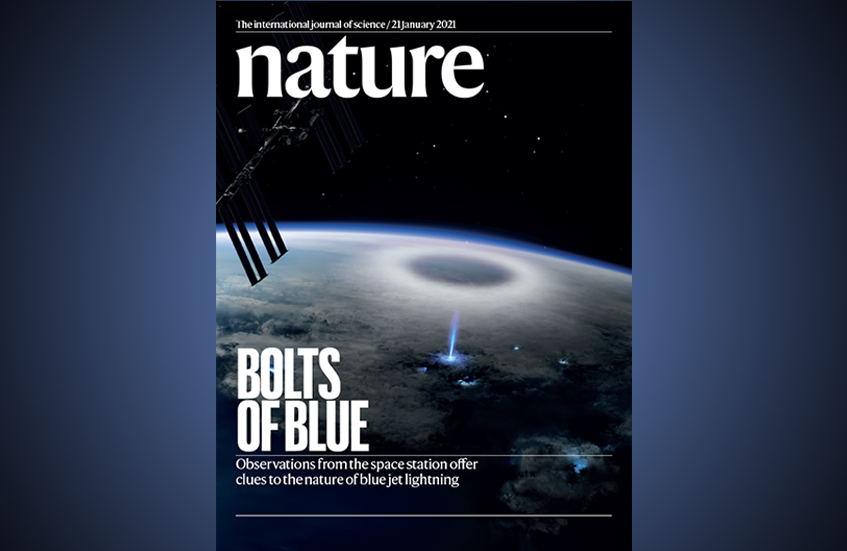Cover page of Nature on January 20th, 2021
Today, the paper (Neubert et al., 2021) on the observations of a blue jet by the ASIM instrument, is promoted on the cover page of Nature. Blue jets are lightning-like electric discharges that shoot out of the cloud top and can reach altitudes of ~50 km and last for hundreds of milliseconds. They are most prominently seen in the blue part of the spectrum, therefore their name. In the new Nature paper entitled “Observation of the onset of a blue jet into the stratoshere”, five intense 10-microsecond blue flashes from a thunderstorm cell have been explored, giving new insight into the mechanisms that lead to production of blue jets.
An animation of blue jets
Credit: DTU Space, Mount Visual / Daniel Schmelling
The study was led by Torsten Neubert and his group at Denmark Technical University (DTU) with the leader of BCSS, Nikolai Østgaard as co-author.
ASIM – a success story
ASIM is an ESA mission and a collaboration between DTU, Denmark, BCSS/UIB, Norway and the University of Valencia, Spain. Østgaard highlights how successful the ASIM mission has turned out to be: “Since it was launched and mounted outside the International Space Station in 2018, the ASIM instrument has led to many groundbreaking results about gamma-ray flashes and lightning from thunderstorm clouds”. See e.g. this news article and AGU press release from December 2019 entitled “New Findings From the ASIM Instrument“.
Østgaard also reflects on the fact that one year ago, the discovery about gamma ray flashes from ASIM was promoted on the cover page of Science. Now ASIM is being highlighted on the front page of Nature. “This is a great tribute to and international recognition of the whole ASIM team” Østgaard says.
About Nature and Science
Nature and Science are the two most recognized scientific journals in the natural sciences. There is intense competition among researchers from all over the world to have their scientific results published in these two journals. Of more than 40 000 submitted papers each year, less than 10 percent are published. Promotion on the cover page is even more prestigious.




